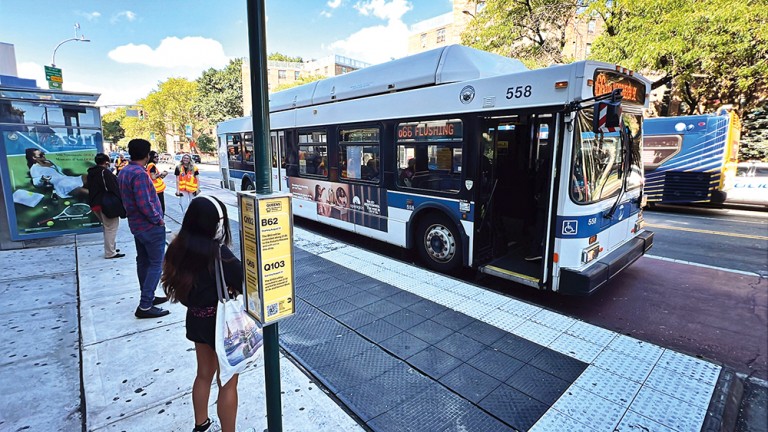By Forum Staff
The Metropolitan Transportation Authority on Sunday announced the full implementation of the Queens Bus Network Redesign, the largest in the country, and one of the most comprehensive service changes in agency history.
The second and last phase began Sunday, Aug. 31, marking the enactment of the entire redesign. The first phase, with nearly two thirds of the changes, launched on June 29.
The overhaul of the 70-year-old Queens bus network is shaped by six years of planning and community feedback consisting of 300 redesign events and nearly 20,000 comments. According to the authority, these changes expand accessibility, improve transit equity, and deliver better bus service with faster trips, more frequent service, and better connections to key destinations and the rest of the transit system. The new bus network includes 124 routes, consisting of 94 Local and 30 Express routes, a net increase of 11 routes from the existing network, and a $33.7 million annual investment to operations.
The new bus network adds a new type of route, labeled “Rush,” in addition to the existing Local, Limited, Select Bus Service, and Express routes. Designed to get riders to their destination more quickly, Rush routes have both a local and a non-stop portion to quickly connect between outer borough neighborhoods and subway stations.
In Queens, where residents are more likely to face longer commutes and have limited access to subway and rail compared to other boroughs, the bus network plays an important role, especially for historically marginalized communities. The MTA studied demographic characteristics and equity areas of concentrated need to learn about how transit can better meet riders’ needs. This led to the development of the Final Plan that holistically invests in service in areas with greater need, and as a result 23 percent of trips in equity areas are estimated to be five or more minutes shorter, compared to the average of 8 percent in other areas.
The MTA said the new network will afford borough bus riders access to 5,696 more jobs within 45 minutes—a 3.8 percent increase, and 31 percent of riders will see a 10 percent or greater improvement in job access—over 17,000 more opportunities.
MTA officials indicated that the agency will analyze changes in bus speeds, ridership, reliability, travel times, rider satisfaction, and other relevant variables over six months, beginning in October, and present a post-implementation analysis in the spring of 2026. The results of this analysis will inform future adjustments to the bus network to ensure that service is aligned with stated goals.
“After years of careful planning, community conversations and meticulous design, Queens’ 800,000 daily bus riders finally have the modernized and more sensible bus network they have always deserved. Our commutes home, to work, to school and to wherever else we need to go are now faster than ever,” said Queens Borough President Donovan Richards Jr. “The conversations around the Queens Bus Network Redesign are not over, however, and I look forward to hearing from Queens families on the effectiveness of the plan and to working with the MTA ahead of its 2026 analysis as we make this new network as smooth as possible.”

